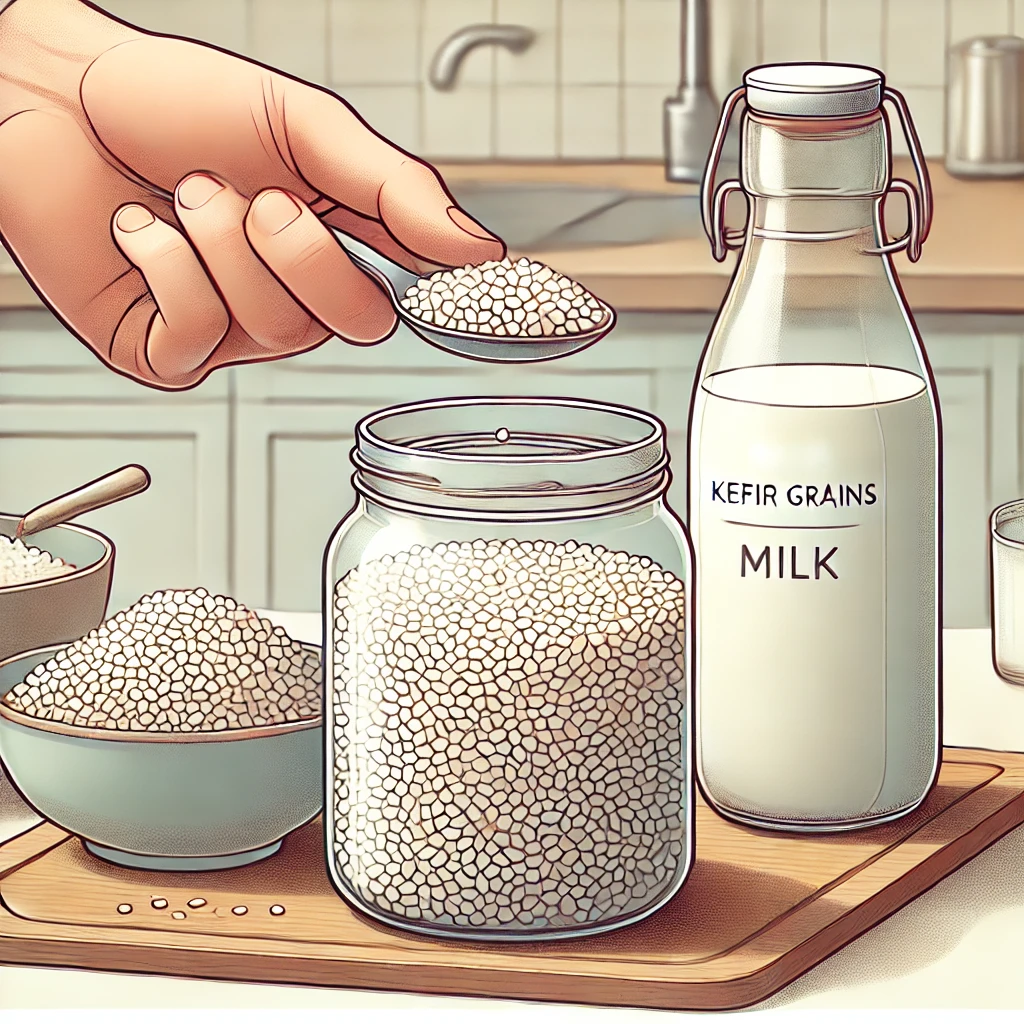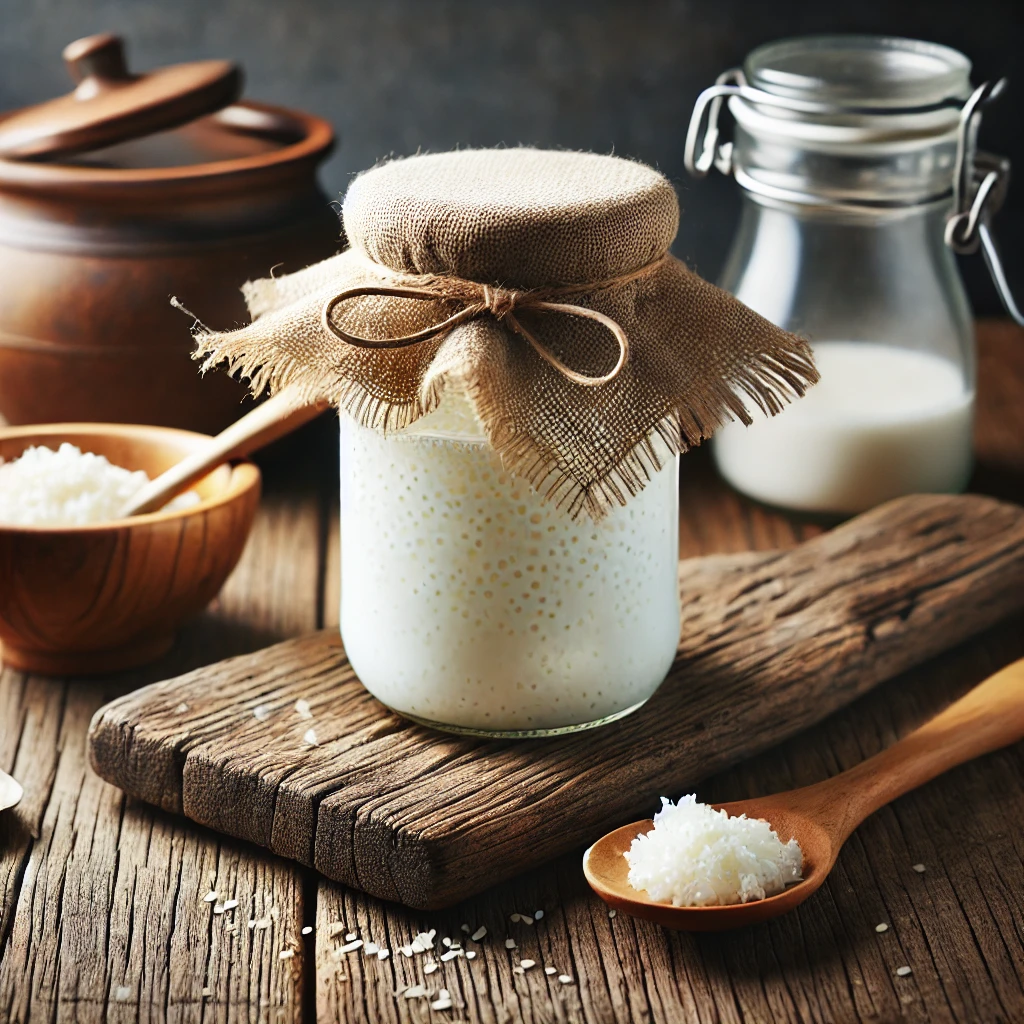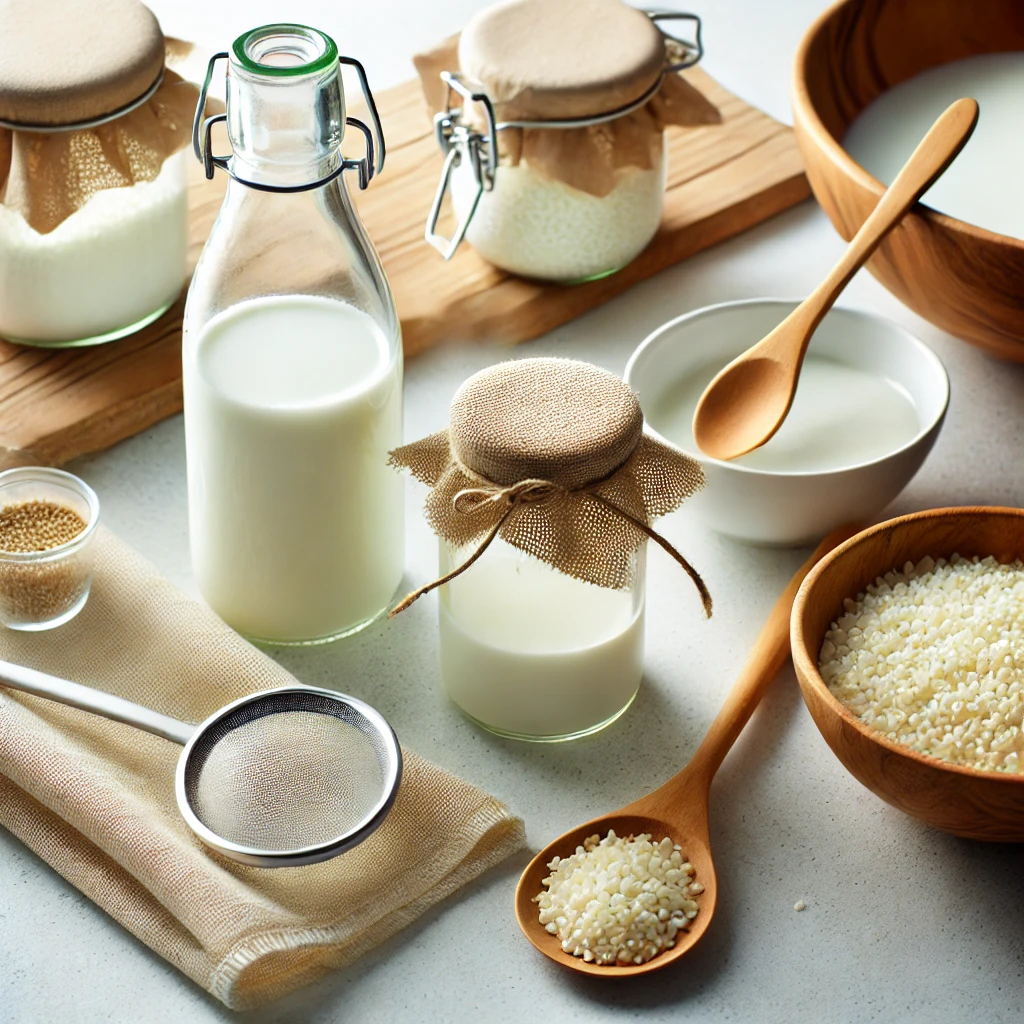Kefir, a probiotic-rich fermented drink, has gained immense popularity due to its numerous health benefits. Originating in the Caucasus Mountains, kefir is made by fermenting milk with kefir grains, which are symbiotic colonies of bacteria and yeast (SCOBY). This blog will guide you through the simple process of fermenting kefir grains at home, highlight its incredible health benefits, and show you how to make it irresistibly delicious with honey and fruit so even kids will love it!
What Are Kefir Grains?

Kefir grains are small, gelatinous clusters of beneficial microorganisms that look like tiny cauliflower florets. They feed on lactose (the sugar in milk) during fermentation, transforming milk into a tangy, fizzy, and nutrient-rich beverage.
Step-by-Step Guide to Fermenting Kefir Grains
Step 1: Gather Your Supplies
- Kefir grains: Fresh, active kefir grains are ideal. You can purchase them online or from health food stores.
- Milk: Whole milk works best (our family prefers raw whole milk), but you can also use low-fat or non-dairy alternatives (like coconut or almond milk) for specific dietary preferences.
- Glass jar: Use a clean, wide-mouth glass jar (16–32 ounces).
- Cover: A breathable material like a paper towel or cheesecloth secured with a rubber band.
- Non-metallic utensils: Use plastic or wooden spoons; metal can harm the grains.
Step 2: Prepare the Mixture
- Add 1–3 tablespoons of kefir grains to the glass jar.
- Pour 1-2 cups of milk into the jar, leaving some space at the top to allow for expansion during fermentation.
- Gently stir the mixture using a wooden or plastic spoon.
Step 3: Cover and Ferment
- Cover the jar with the breathable material and secure it with a rubber band.
- Place the jar in a warm, dark place (68–78°F or 20–25°C) for 24–48 hours. The longer it ferments, the tangier and thicker the kefir becomes.
Step 4: Check for Fermentation
- After 24 hours, check the texture. If it has thickened and has a tangy smell, it’s ready. If not, let it ferment for another 12–24 hours.
Step 5: Strain the Kefir
- Place a plastic or non-metallic strainer over a bowl.
- Pour the fermented mixture through the strainer to separate the kefir grains from the liquid.
- Use a spoon to gently move the grains around if needed, but avoid pressing them too hard.
Step 6: Store and Reuse
- Store the liquid kefir in a glass jar in the refrigerator. It’s ready to drink or use in smoothies and recipes!
- Rinse the grains with fresh milk or water before using them for the next batch.
Health Benefits of Kefir

Rich in Probiotics
Kefir is a powerhouse of probiotics, which help maintain a healthy gut by promoting beneficial bacteria. This can improve digestion, reduce bloating, and support immune health.
Boosts Immunity
Kefir contains bioactive compounds and nutrients like vitamins B12 and K2, magnesium, and calcium. These nutrients, combined with probiotics, strengthen the immune system.
Improves Lactose Digestion
During fermentation, kefir grains break down lactose, making kefir easier to digest for individuals with lactose intolerance.
Supports Bone Health
Kefir is an excellent source of calcium and vitamin K2, both of which are essential for maintaining strong and healthy bones.
Anti-Inflammatory and Antibacterial Properties
The probiotics and peptides in kefir can reduce inflammation and help fight harmful bacteria, protecting your overall health.
May Aid in Weight Management
Kefir’s high protein content helps increase satiety, while probiotics can regulate metabolism and prevent overeating.
Supports Mental Health
The gut-brain connection means that a healthy gut can positively impact mood, reduce stress, and even improve symptoms of anxiety and depression. Kefir’s probiotics contribute to this balance.
How to Make Kefir Delicious (Even for Kids!)
Kefir has a naturally tangy taste that might take some getting used to, especially for children. But with a little creativity, you can turn it into a sweet, creamy, and delightful treat!

1. Honey-Sweetened Kefir
- After straining your kefir, add 1–2 teaspoons of raw honey per cup of kefir.
- Stir well until the honey dissolves.
- Serve chilled for a smooth, sweet drink with all the probiotic benefits.
2. Fruit-Infused Kefir Smoothies
- Blend 1 cup of kefir with your child’s favorite fruits. Some great options include:
- Banana (adds natural sweetness)
- Strawberries (pairs well with honey or vanilla extract)
- Mango (makes it super creamy and tropical)
- Blueberries (packed with antioxidants)
- Add a drizzle of honey or maple syrup if extra sweetness is needed.
- You can also toss in a handful of spinach or a tablespoon of chia seeds for an extra nutritional boost—kids won’t even taste it!
3. Creamy Vanilla Kefir
- Stir 1/2 teaspoon of pure vanilla extract into a cup of kefir.
- Add a pinch of cinnamon for extra warmth and flavor.
- Sweeten with honey or a mashed banana.
4. Kefir Ice Pops
- Blend kefir with fruits and a little honey.
- Pour the mixture into popsicle molds.
- Freeze for 4-6 hours until solid.
- Enjoy gut-friendly, probiotic-packed frozen treats that kids will love!

Tips for Success
- Start with small batches if you’re new to fermenting kefir.
- If the kefir tastes too sour, reduce the fermentation time.
- Always use clean equipment to avoid contamination.
- Store your kefir grains in milk or water in the refrigerator if you need to pause fermentation for a few days.
Let’s Get to Work!
Making kefir at home is a simple, cost-effective way to enjoy a nutrient-packed, gut-friendly drink. With just a few basic supplies and some patience, you can create your own healthy kefir and reap its numerous health benefits. Plus, with these delicious flavoring ideas, even the pickiest eaters will enjoy it! Start your fermentation journey today, and let these tiny grains work their magic for your well-being!
Let’s reclaim what is rightfully our’s in this digital noise we live in. Join us in this exploration of how deep the rabbit hole actually goes.

No responses yet